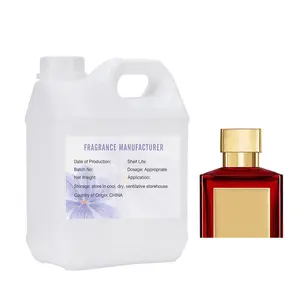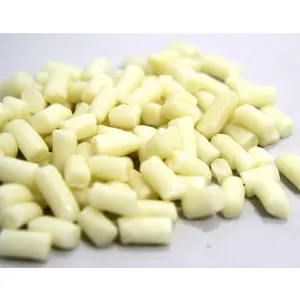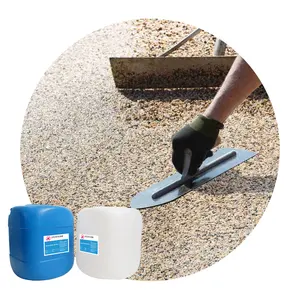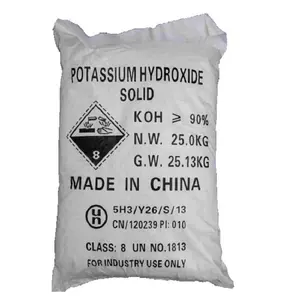Popular in your industry



























































Top categories
About leather tanning chemicals
The term leather tanning chemicals encompasses a range of substances used in the transformation of animal hides into durable and versatile leather. These chemicals are crucial in various stages of the tanning process, from curing and preserving the hides to the final coloring and finishing. Alibaba.com hosts a comprehensive selection of these essential industrial compounds, catering to the diverse needs of the global leather industry.
Types and Functions of Leather Tanning Agents
The leather tanning agents available on Alibaba.com include a variety of chemicals, each serving a specific purpose in the leather tanning process. Chemicals used in leather tanning are selected based on the desired properties of the finished product. For instance, chromium sulfate tanning agents are widely used for their efficiency in producing soft, malleable leather, while vegetable tanning agents like tannic acid are chosen for creating leather with a firm and resilient body. Other types, such as syntan leather chemicals, are synthetic tanning agents designed to offer more control over the tanning process and are often used to achieve specific finishes or to reduce the environmental impact of tanning. The characteristics of these products, such as their solubility, reactivity with the hide's proteins, and the ability to produce a range of leather textures from soft and supple to rugged and sturdy, make them indispensable in the leather industry.
Structure and Operation of Tanning Chemicals
The physical components of leather tanning chemicals are diverse, ranging from simple powders to complex liquid formulations. Each chemical has a specific role, whether it's altering the pH level of the hide with acid used in tanning of leather or cross-linking proteins with tanning agents to stabilize the hide's structure. For example, chrome tanning chemicals work by binding with the collagen fibers of the hide, transforming them into a stable material that resists heat and microbial degradation. The operational process involves several stages, where the hides are soaked, limed, and then treated with tanning agents. The precise methodology and sequence of chemical applications are critical to the quality of the final leather product.
Materials and Properties in Leather Tanning
The materials used in leather tanning chemicals are chosen for their reactivity with hide proteins and their ability to withstand the rigors of the tanning process. Materials such as chromium sulfate are favored for their efficiency and the quality of leather they produce. Natural materials like quebracho, a type of vegetable tanning agent, are selected for their environmental benefits and the unique characteristics they impart to the leather, such as a rich patina that develops over time. The properties of these materials, such as their molecular weight, ionic charge, and ability to penetrate the hide, are carefully considered to ensure the highest quality of tanning.
Business Usages and Applications
Leather tanning chemicals are integral to industries ranging from fashion to automotive manufacturing. In the fashion industry, tanning agents are used to create soft, pliable leathers for luxury goods, while in the automotive sector, more durable and resistant leathers are required. These chemicals add business value by enabling manufacturers to tailor the properties of leather to specific applications, thereby meeting the diverse needs of consumers and industries. The versatility of these chemicals allows for a wide range of textures, colors, and finishes, which in turn creates a multitude of business opportunities for leather goods manufacturers.
Functions of Leather Tanning Chemicals
The primary function of leather tanning chemicals is to convert raw hides into leather that is suitable for a variety of uses. This includes making the leather resistant to decomposition, improving its flexibility, and preparing it for further processing like dyeing and finishing. Each chemical plays a specific role in achieving these functions, from the initial preservation of the hide to the final stages where the leather is made ready for market. The functionality of these chemicals extends to the enhancement of the leather's resistance to water, stains, and other environmental factors, ensuring the longevity and durability of the final product.
Features of Leather Tanning Chemicals
The distinct characteristics of leather tanning chemicals on Alibaba.com include their specialized formulations that cater to different tanning processes. Features such as rapid penetration into hides, uniformity in tanning, and the ability to produce a wide range of finishes make these chemicals stand out. Additionally, some chemicals are formulated to minimize the environmental impact of tanning, serving as unique selling points for eco-conscious businesses. Innovations in tanning chemistry have also led to the development of chemicals that can enhance the tactile and olfactory properties of leather, contributing to a more luxurious user experience.
Benefits of Using Quality Tanning Chemicals
Using high-quality leather tanning chemicals results in leather that is not only aesthetically pleasing but also durable and long-lasting. These benefits extend to the end-user, who enjoys a superior product, and to the manufacturer, who can expect fewer defects and a more efficient production process. The environmental benefits of using advanced tanning agents, such as reduced water and energy consumption, also contribute to a more sustainable industry. Moreover, the use of quality chemicals can lead to improved worker safety in tanneries and reduced risk of environmental contamination.
How to Use and Maintain Leather Tanning Chemicals
Effective use of leather tanning chemicals involves following precise recipes and processes, which vary depending on the type of leather being produced. Maintenance of these chemicals typically requires proper storage conditions to prevent degradation. For instance, humidity and temperature control are critical for preserving the efficacy of chemical tanning hides agents. Proper inventory management and adherence to safety guidelines are also essential to ensure that the chemicals maintain their quality over time and that they are used in a manner that maximizes their tanning potential while minimizing waste.
How to Choose the Right Leather Tanning Chemicals?
Choosing the right chemical used in leather tanning involves understanding the specific requirements of the leather to be produced. Factors such as the desired color, texture, and durability play a crucial role. Additionally, environmental regulations and safety standards must be considered when selecting chemicals used in leather tanning process. It is also important to consider the compatibility of different chemicals and the specific characteristics of the hides being tanned. Knowledge of the latest advancements and trends in tanning technology can also guide buyers in making informed decisions.
What are the environmental impacts of using leather tanning chemicals?
The use of leather tanning chemicals can have significant environmental impacts if not managed properly. Chemicals such as chrome tanning chemicals can lead to heavy metal pollution if waste is not treated adequately. Alibaba.com encourages suppliers to adopt eco-friendly practices and offers a platform for sourcing sustainable alternatives. The platform also promotes the use of chemicals that comply with international environmental standards, helping to reduce the overall ecological footprint of the leather tanning industry.
How to ensure the quality of leather tanning chemicals?
Ensuring the quality of leather tanning chemicals involves sourcing from reputable leather tanning chemicals manufacturers who adhere to international standards and regulations. It is also important to verify the purity and composition of the chemicals, which can be done through batch testing and certification checks. Quality assurance processes, such as regular audits of manufacturing facilities and rigorous testing protocols, are essential to maintain the high standards expected by the leather industry.
What after-sales support is available for businesses purchasing leather tanning chemicals?
Businesses purchasing leather tanning chemicals on Alibaba.com can expect a range of after-sales support services. Suppliers typically provide online support and video technical support to address any queries or concerns regarding the use and application of the chemicals purchased. This support extends to guidance on optimal usage, troubleshooting common issues, and providing updates on the latest industry practices and regulatory changes.

































